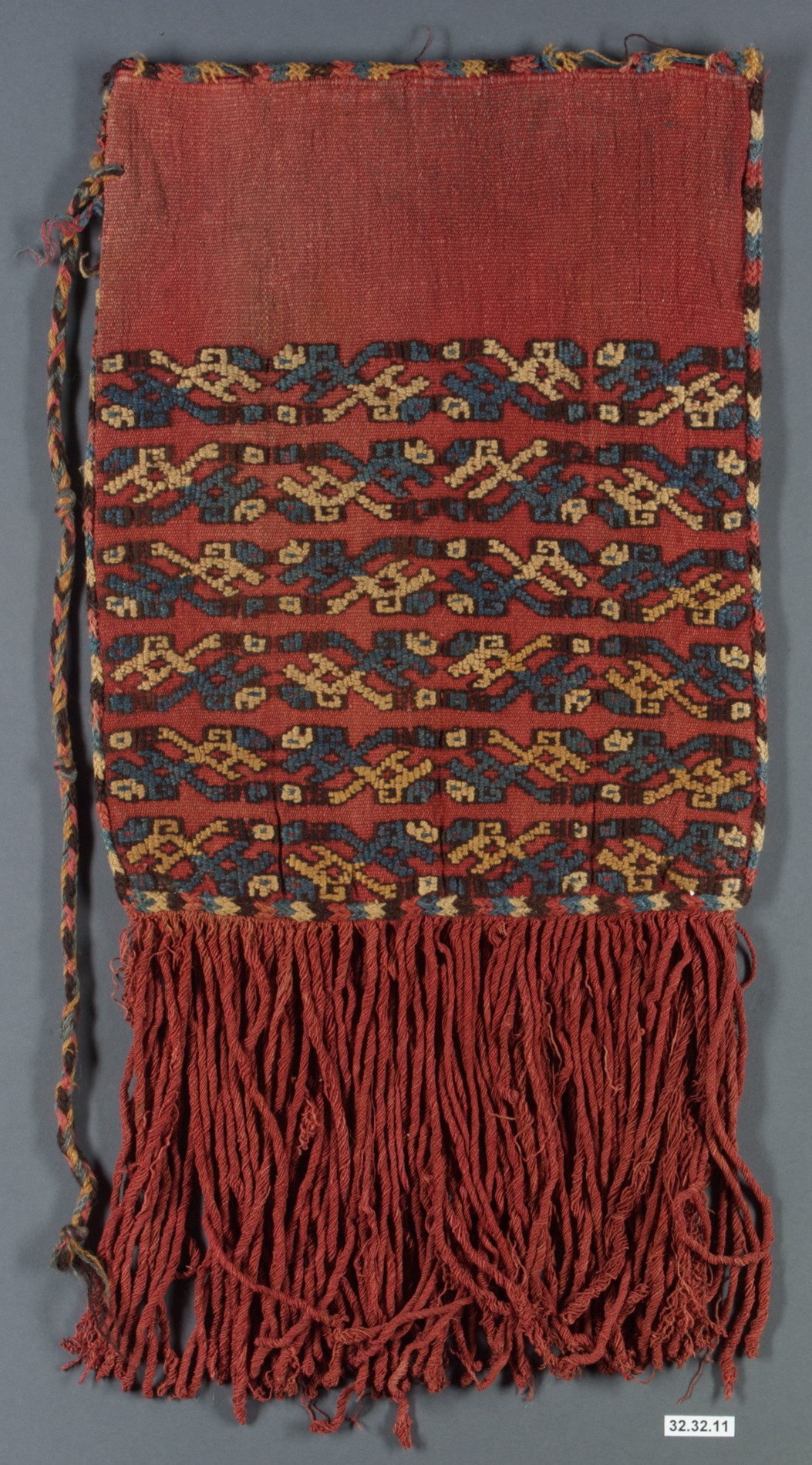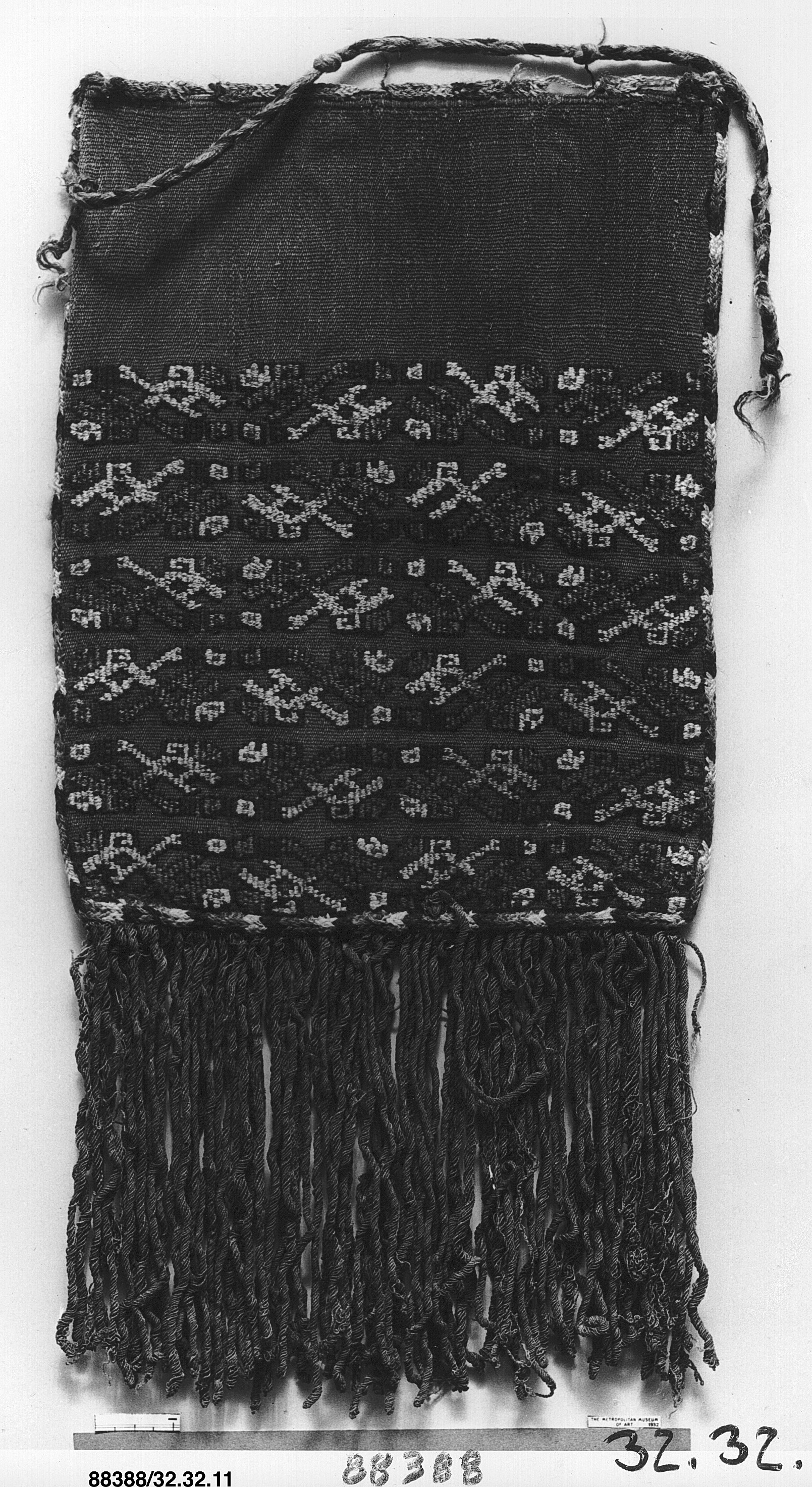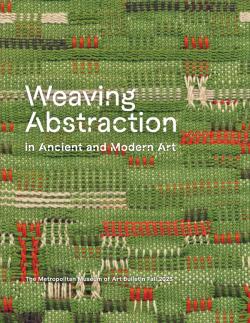Embroidered bag with fringe
Not on view
The arid conditions of the desert on the south coast of Peru are ideal for the preservation of organic materials such as textiles. This bag, used for carrying coca leaves, was made by weavers of the Nasca culture that dominated the coastal valleys of southern Peru. The textile was made as a single piece using red thread with discontinuous weaving at one end where the unwoven ends of the warps formed a fringe. The seven interlocking bands in yellow, blue and black forming animal faces with red eyes, were embroidered onto the red base cloth and the weaving folded in half with the unwoven warps forming the tassels. A cross-knit loop stich was used to finish the edges. A cord for closing the bag was attached to the top. This fabric was made during a period when the Nasca culture began to manifest influences from the Wari empire, which originated in the Ayacucho region in the highlands and later dominated most of the coast of Peru. Wari traits are evident in the pattern of the embroidered design and the exclusive use of camelid thread, as llamas and alpacas were not native to the coast.
Chewing coca leaves with quicklime or ash releases cocaine hydrochloride which quickly enters the circulation and produces a mild narcotic effect (Plowman, 1984). The drug is believed to provide energy and mask hunger (Plowman, 1984). In present-day traditional societies, chewing coca leaves involves both social and religious rituals and it is reasonable to think that this was true thousands of years ago (Sharratt, 2014).
References and Further Reading
Allen, Catherine J. The Hold Life Has: Coca and Cultural Identity in an Andean Community, 2nd ed. (Washington, 2002).
Dillehay, Tom D., Jack Rosen, Donald Ugent, Anathasios Karathanasis, Víctor Vásquez, and Patricia J, Netherly. “Early Holocene Coca Chewing in Northern Peru.” Antiquity Volume 84 (326) (2010), pp. 939-953.
Lemaitre, Serge. Inca: Textiles and Ornaments of the Andes. Brussels, Belgium: Ludion. 2018.
Plowman, Timothy. “The Ethnobotany of Coca (Erythroxylum spp. Erythroxylaceae) Advances” Economic Botany, Vol 1. Ethnobotany in the Neotropics (18 September 1984), pp. 94-101.
Sharratt, Nicola. Carrying Coca; 1,500 Years of Andean Chuspas. New York, NY: Bard Graduate Center, 2014.
Stone-Miller, Rebecca. To Weave for the Sun: Andean Textiles in the Museum of Fine Arts. Boston. Boston, MA: The Museum of Fine Arts. Boston. 1992, pp. 96, 98.
Due to rights restrictions, this image cannot be enlarged, viewed at full screen, or downloaded.
This artwork is meant to be viewed from right to left. Scroll left to view more.





